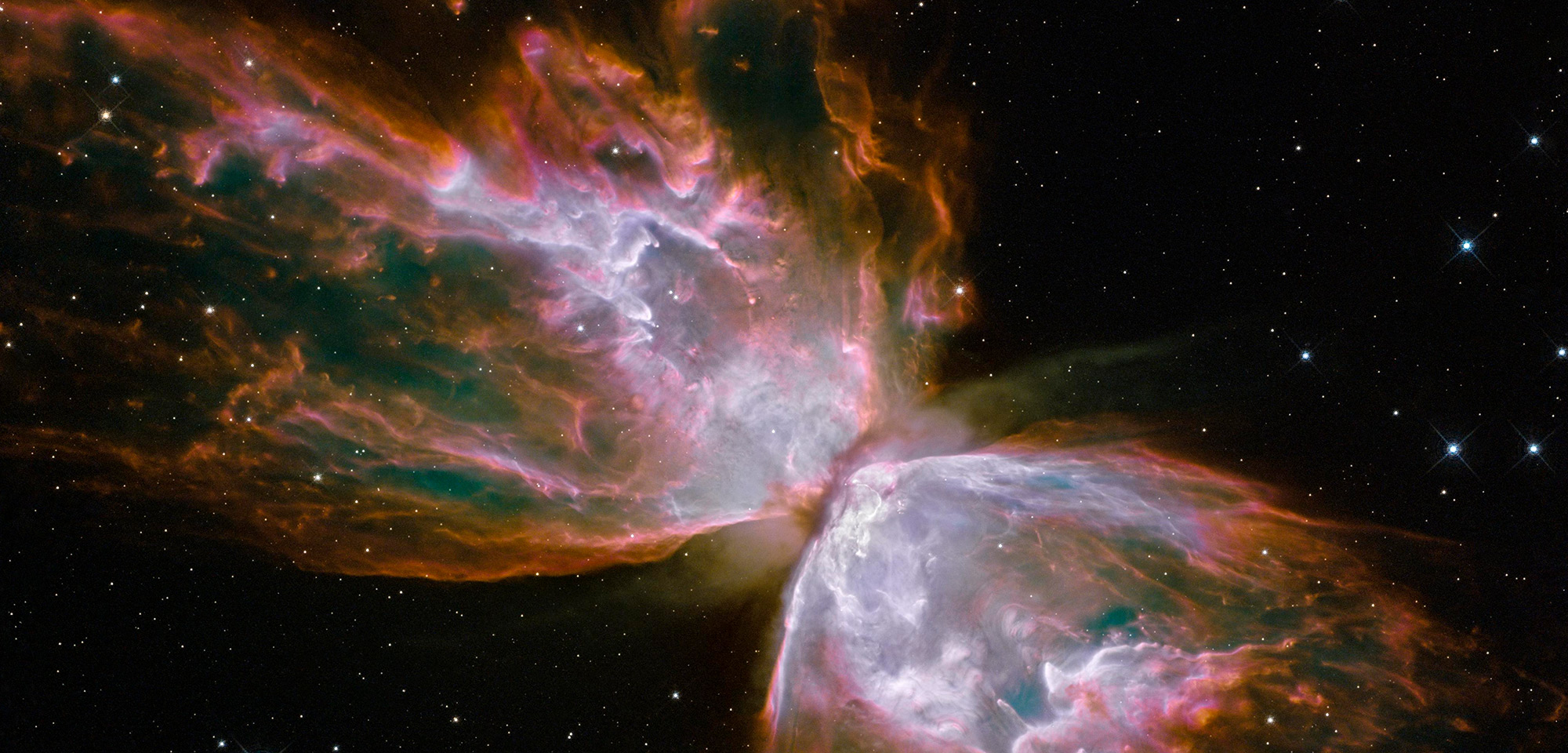Hubble Spots S-shape Within Butterfly Nebula

The Hubble Space Telescope, belonging to NASA, has just taken a picture of the Butterfly Nebula, which reveals how violent and chaotic the universe actually is. The Butterfly Nebula, known by its serial code NGC 6302, is one of the most complex and impressive celestial bodies that scientists have looked into. It is located in the Scorpio constellation and it resembles a butterfly upon first inspection. According to NASA, however, NGC 6302 might look like a butterfly, but the bi-polar nebula is much larger and scarier than a summer bug.
The nebula is actually a remnant of a dying star that sent out material into space, thus creating two separate clouds of gasses that were heated to over 36,000 F (20,000 C). The Hubble telescope has now made a distinct observation of the Butterfly Nebula: there are distinct S-shaped patterns inside the celestial body.
The S-shape occurs because gas is blown out of the central star at very high speeds. Unfortunately, streams are not visible to the naked eye and were only visible because Hubble’s camera uses near-infrared emissions from ionized iron atoms.
Joel Kastner, a researcher affiliated with the Institute of Technology, has recently declared that the S-shape of the Butterfly Nebula is a true eye-opener. It can be traced all the way to the core of the nebula, which scientists previously thought to house a star with a mass five times as big as the mass of our Sun.
Bruce Balick, a scientist affiliated with the University of Washington in Seattle, has explained that the iron emission is a sensitive tracer of the energetic collisions occurring between fast winds coming from the stars and some other, slower winds. Balick explained that it is a common observation in remnants of supernovas, outflowing jets from newborn stars and active galactic nucleus.
0 comments